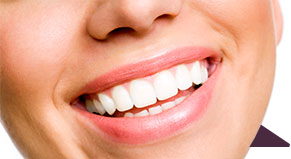 Many adults avoid having their teeth straightened later in life because they fear they are too old to be seen with braces on their teeth. As with many things in life, society has made it acceptable for younger people to get braces, but as people get older, they become self-conscious about having all that metal in their mouths. The irony here is that the adults who could benefit the most from the braces are also probably the most self-conscious about their crooked teeth too. So one has to ask themselves: would I rather be self-conscious about my crooked teeth, or be self-conscious about my braces, which will eventually come off and I’ll have beautiful straight teeth.
Many adults avoid having their teeth straightened later in life because they fear they are too old to be seen with braces on their teeth. As with many things in life, society has made it acceptable for younger people to get braces, but as people get older, they become self-conscious about having all that metal in their mouths. The irony here is that the adults who could benefit the most from the braces are also probably the most self-conscious about their crooked teeth too. So one has to ask themselves: would I rather be self-conscious about my crooked teeth, or be self-conscious about my braces, which will eventually come off and I’ll have beautiful straight teeth.
What Is Involved in Getting Braces for Adults?
Parents are not usually surprised to hear that their teenagers need braces; it seems to be a right of passage for a lot of young people, and teenagers are often not phased by the braces either. Adults may be a bit more surprised to learn they need braces to correct crowding teeth or crooked teeth, but the procedures are basically the same, whether the braces are for teenagers or adults.
First, the teeth will be cleaned by a hygienist in order to ensure a clean slate for the brackets to be attached to. Next, the orthodontist (a dentist who specializes in braces and other dental appliances) will attach metal brackets to the front of the teeth. It might be necessary to attach brackets to all of the teeth, or just the top teeth, or just the bottom teeth, depending on the reason for needing the braces. The brackets are attached using dental cement which will keep the brackets in place until they are removed after the treatment is completed. Once all of the brackets are in place, a wire will be threaded through the brackets to create what we commonly recognize as braces. This wire is what will be used to tighten and loosen teeth in order to make them move into better positioning.
Once the braces have been placed, adult patients will need to attend regular dental visits in order to have the brackets tightened so that the teeth can continue to move into place. Regular and routine dental care will be required as well: regular brushing and flossing; sometimes, more brushing and flossing is required because of food getting stuck in the braces that can cause tooth decay.
Depending on the reason for needing the braces, treatment can last between 6 months to several years. Braces are typically worn for about 2 years on average. Because adult teeth begin to crowd later in life, a retainer may be placed once the braces are removed following successful treatment. This is a thin metal wire that is cemented to the back of the teeth, so no one will be able to see it in the patient’s mouth. These retainers will remain in a patients mouth until they fall out, at which point it is usually recommended that they are replaced, in order to maintain the smile that the braces worked so hard to produce.
There’s nothing to it, really! It does not matter how old you are, as long as your teeth are strong, you are great a candidate for braces. However, if you're still a bit self-conscious about having braces as an adult and you’d prefer something a little less obvious, you might want to consider Invisalign braces.
What Are Invisalign Braces?
Like traditional metal braces, Invisalign braces are used to straighten teeth, align crooked or crowded teeth, and create a beautiful smile. This type of treatment is very popular with adults because they are virtually invisible. The treatment system uses a series of clear, plastic aligner trays that are molded to patient’s teeth and mouth, and then switched out every so many weeks when the teeth have begun moving into place. The aligner trays keep a constant pressure on the teeth so that they will move quickly and efficiently into the desired location.
Why Choose Invisalign Braces?
There are several reasons why an adult might opt for Invisalign over traditional braces. These include the fact that the Invisalign aligner trays are clear and are not immediately noticeable on the teeth. The aligners can move teeth faster than traditional braces, which means patients don’t have to undergo treatment for as long as they might with traditional braces. There is no sharp edges or cutting inside the mouth that one can sometimes experience with traditional metal braces, and patients appreciate how comfortable the aligners are to wear. The aligner trays can be removed for eating and drinking, but need to be worn up to 22 hours per day in order to see the full effects of the treatment.
Overall, patients complain less of headaches and pain in the mouth because of the way the aligners work. What’s more, the technology used to determine a treatment plan actually allows patients to see a 3D rendition of what their teeth will look like when the treatment is complete - which is very exciting for patients when trying to make the decision to opt for Invisalign or traditional braces.
How Is Getting Invisalign Different From Traditional Braces
There are many more steps involved in getting Invisalign Braces than traditional metal braces. Patients should expect to visit their dentist more regularly when they opt for treatment with Invisalign. Here’s how the Invisalign system works:
The dentist will take digital images of the mouth and create a mold for the plastic aligner trays that are going to be used to move patient's teeth. Next, the molds will be sent to a lab where a dental technician or other dental professional will create plastic aligner trays from the molds. Once the molds have been returned to the dentist office, patients will be fitted for the aligners and given instructions on how to care for them during treatment. Subsequent appointments will be required to check on the progress of treatment, and to have the patients fitted for new aligner trays. Patients can expect to have up to 50 trays over a 2 year period, if necessary.
Whether adult patients choose to go with traditional braces or with Invisalign braces, they should not let their fear of getting braces, or their self-confidence gets in the way of the beautiful smile they deserve. Talking to your dentist is the best way to determine treatment options and to feel comfortable with your decision. Once you start to see results, you’ll be glad you made the decision to get braces as an adult.
If you're looking into a solution for your crooked teeth, don't hesitate to contact our Chicago office to setup an appointment today!






 Website Powered by Sesame 24-7™
Website Powered by Sesame 24-7™